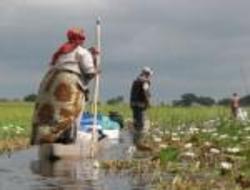TNI | October 2011
Conclusion
In this paper we have argued that the water dimension of agricultural land acquisition in Africa has yet to be widely acknowledged, yet in all but the most humid of tropical agroclimatic zones, water is a key constraint and agricultural water management is a pre-requisite for commercial production.
While a requirement for irrigation is clear in some investment projects, such as those in the Sahel (some of which involve the construction of irrigation infrastructure) – even if the contractual terms of access to it are not – for a large number of projects in semi-arid or sub-humid zones the nature of water constraints have been largely ignored or obscured in both contractual disclosure and press reporting.
We have argued that seasonality, annual variation, and within-season interruptions characteristic of rainfall in Africa’s savannas mean that water management is fundamental to successful agriculture and evident in many indigenous farming systems that deploy techniques ranging from water conservation and harvesting to stream diversion and irrigation. However, the nature of water constraints is intermittent and highly specific to key moments in crop development, thus not predictable on the basis of indicators of annual total rainfall or runoff that are used in agroclimatic zoning exercises.
In reviewing the types of crops proposed by FDI projects we have concluded that many will necessarily involve development of water use, and associated infrastructure for storage and distribution of water. There are evidently potential benefits to other water users, including small-scale agricultural producers, if such infrastructure can provide new sources of water at times when green and/or blue water may be scarce.
Yet there is also a high risk that new large-scale agricultural projects will have a negative impact on existing small-scale water users. This risk is heightened because the critical nature of water resources is highly specific to time and place, and thus measures such as annual rainfall or average river flow give no guide to likely impacts.
In the absence of more sophisticated understanding of how different types of water resources (e.g. riverbanks, swamplands, river flows) are used at different times of the year by different types of users, there is a risk that large-scale commercial agriculture will cause unforeseen but disproportionate damage to existing small-scale production systems.
This is likely even where existing small-scale water use has legal protection, because it may lack visibility, in part due to its small physical extent and (often) intermittent duration.
A final aspect of the water dimension of large-scale land acquisitions is that impacts are likely to be far more extensive than might be anticipated from the area of land occupied. Unlike land which has a distinct spatial boundary, water use depends on flows through the landscape. Consequently, restriction or interruption of flows of water in an area occupied in one part of the landscape will have potentially widespread downstream impacts.













